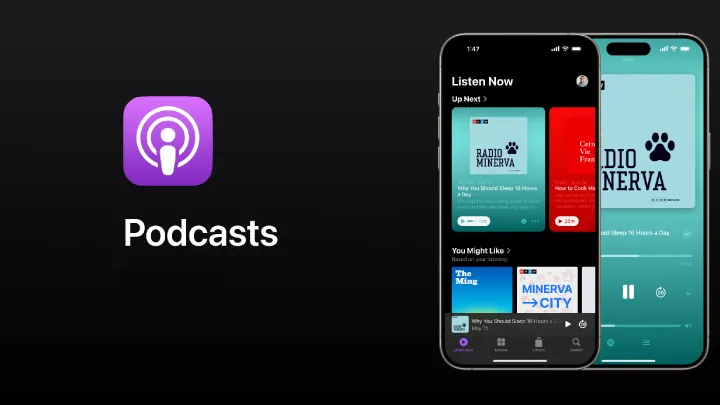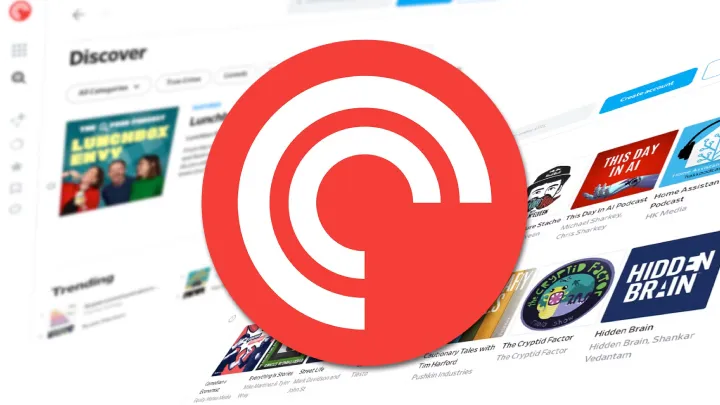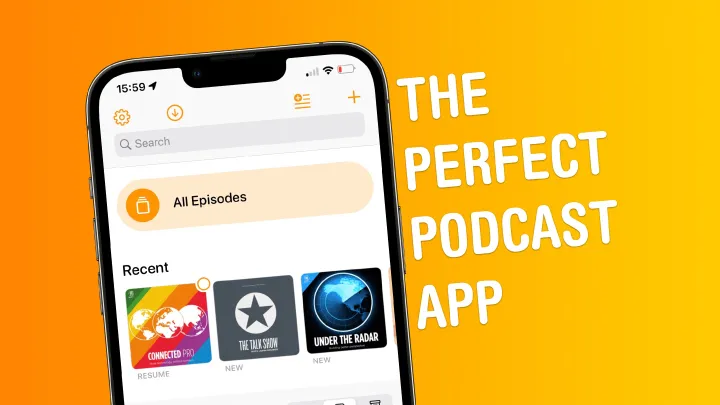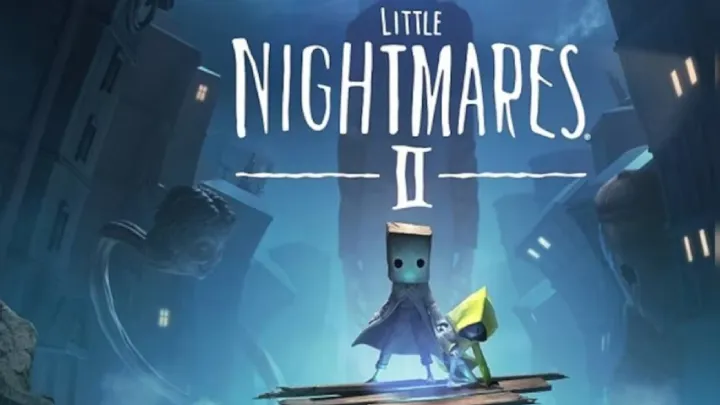For years, Google Podcasts was a simple, reliable gateway into the world of spoken audio. It didn’t overwhelm listeners with too many bells and whistles. Instead, it focused on doing one thing well: helping users discover, subscribe to, and enjoy their favorite shows. But with Google announcing the end of Google Podcasts, millions of listeners now find themselves looking for a new home. That search, while daunting, can also be exciting. After all, the closure of one platform opens the door to a rich soundscape of other podcast apps—each with its own identity, strengths, and quirks.
This article explores ten of the best alternatives available today. They range from household names like Spotify and Apple Podcasts to independent favorites like Pocket Casts and Overcast, as well as niche-focused newcomers. Together, they represent a vibrant ecosystem of choices, ensuring that no listener has to feel lost after Google Podcasts fades into history.

1. Apple Podcasts: The Veteran of the Industry
Apple Podcasts is often considered the grandfather of modern podcasting. Long before Google even entered the space, Apple was already cultivating a vast library and introducing millions of users to the concept of on-demand audio. As the default app on iPhones and iPads, it still commands a massive audience. Its design reflects Apple’s broader philosophy: clean, intuitive, and built around simplicity.
Listeners who transition from Google Podcasts will appreciate the effortless navigation. Subscribing to shows feels natural, and episodes are presented in a way that prioritizes clarity over clutter. Apple has also invested heavily in curation. The app regularly highlights trending shows, new creators, and regional hits, which helps users discover gems beyond their usual favorites. On the technical side, Apple Podcasts syncs seamlessly across devices through iCloud, ensuring that you can start an episode on your phone and finish it later on your laptop or iPad without interruption.
Still, Apple Podcasts is not perfect. Some critics argue that its search functionality lags behind newer apps, and the interface—while sleek—doesn’t offer the same depth of customization as more advanced tools. Yet for many, its familiarity and reliability outweigh those drawbacks. It remains a natural choice for anyone deeply embedded in the Apple ecosystem.
2. Spotify: The Giant with Global Reach
While Apple may have pioneered the field, Spotify has arguably reshaped it. Once known exclusively as a music platform, Spotify has aggressively moved into podcasting, pouring billions into acquisitions, licensing deals, and original productions. Today, it’s one of the most dominant players in the space, boasting exclusive shows that can’t be found anywhere else.
What makes Spotify particularly appealing as a Google Podcasts alternative is its integration of music and podcasts in one app. Instead of juggling two platforms, listeners can transition seamlessly between playlists, albums, and spoken audio. This fusion makes Spotify a one-stop shop for audio entertainment. The app also invests heavily in personalization. Its recommendation engine analyzes listening habits to serve up tailored suggestions, much like it does with music. That means you’re constantly being nudged toward new shows that align with your interests.
However, Spotify’s approach isn’t universally loved. Some users dislike the way podcasts and music are mixed in search results, creating a sense of clutter. Others are wary of the company’s exclusivity deals, fearing that podcasting might drift away from its open roots. Despite these debates, Spotify’s convenience and massive library make it one of the strongest successors to Google Podcasts.
3. Pocket Casts: The Power Listener’s Choice
If Apple Podcasts and Spotify aim at the masses, Pocket Casts appeals to connoisseurs—the listeners who see podcasting not as casual background noise but as a central part of their media diet. Known for its elegant interface and robust feature set, Pocket Casts has long been a darling of the podcast community.
The app’s standout strength lies in its customization. Users can fine-tune nearly every aspect of playback, from variable speed controls to the option of trimming silences. Automatic volume leveling ensures that wildly different audio mixes don’t force you to constantly adjust your headphones. These may sound like small touches, but they add up to a listening experience that feels smooth, thoughtful, and highly controlled.
Pocket Casts also shines when it comes to library management. Its filters, playlists, and sorting tools allow for a degree of organization that goes well beyond what Google Podcasts ever offered. For those who follow dozens of shows and hate clutter, this is invaluable. That said, Pocket Casts has a smaller user base compared to giants like Spotify, which means it doesn’t have the same level of cultural clout. But for serious listeners who value precision and polish, it remains a top-tier choice.
4. Overcast: Simplicity Meets Innovation
Overcast is another favorite among podcast enthusiasts, particularly within the iOS community. Created by Marco Arment, a respected figure in the tech world, Overcast combines a minimalist design with clever innovations that have since become industry standards.
Chief among these is “Smart Speed,” a feature that shortens silences without distorting voices. It subtly trims pauses, allowing you to finish episodes faster without ever feeling rushed. Another highlight is “Voice Boost,” which equalizes audio levels so that even poorly produced shows sound balanced and listenable. For anyone frustrated by podcasts with wildly uneven sound quality, this is a game changer.
Overcast is free with ads, though a paid subscription removes them and supports the developer. While it doesn’t have the massive budgets of Spotify or Apple, its loyal user base praises it for staying true to the open spirit of podcasting. Unlike companies that push exclusivity, Overcast keeps access open, ensuring that podcasts remain broadly available. It’s an app built by a podcaster, for podcast listeners—a fact that resonates strongly with those who care about the medium’s independence.
5. Castbox: The All-in-One Experience
Castbox takes a slightly different approach by blending podcast listening with community features. Available across Android, iOS, and even desktop, Castbox has positioned itself as a global player with a wide-ranging catalog. What sets it apart is its in-app commenting system. Listeners can leave thoughts directly on episodes, sparking conversations that transform passive listening into a shared experience.
Beyond social interaction, Castbox also offers practical tools like in-audio search. This feature scans the transcripts of episodes, making it possible to find specific discussions within a podcast. For researchers, students, or anyone who uses podcasts as a learning resource, this functionality is invaluable.
Of course, Castbox’s broader ambitions sometimes make the app feel a little crowded. Its design isn’t as stripped-down as Overcast or Apple Podcasts, which can be overwhelming for those who prefer minimalism. Yet for users who enjoy mixing discovery, discussion, and listening in one place, Castbox is a dynamic alternative that goes beyond simple playback.

6. Stitcher: A Pioneer in Transition
Stitcher has long been a recognizable name in podcasting. As one of the first platforms dedicated entirely to the medium, it helped establish the podcast ecosystem before giants like Spotify ever entered the scene. Over time, Stitcher built a reputation for original content and curated playlists that made it easier for users to dive into specific genres.
What listeners appreciate most about Stitcher is its structured approach to discovery. Its editorial teams craft playlists around themes—comedy, politics, true crime, wellness—giving users a guided entry point into the endless sprawl of podcasts. This curation is particularly helpful for newcomers who might feel overwhelmed.
That said, Stitcher’s future is less certain since it was acquired and reshaped under SiriusXM. Some longtime users worry that the platform’s identity could blur as corporate strategies shift. But in the present, Stitcher still delivers a reliable listening experience with unique content, and it remains a solid Google Podcasts replacement for those who value editorial guidance.
7. TuneIn Radio: Beyond Podcasts
TuneIn is often thought of as a radio app, but it’s also a formidable player in podcasting. Its biggest strength is its sheer breadth of content. Beyond podcasts, TuneIn provides access to live radio stations, sports broadcasts, news, and even audiobooks. For listeners who enjoy a diverse audio diet, this breadth is unmatched.
From a user’s perspective, the transition from Google Podcasts to TuneIn feels natural if you like the idea of consolidating audio experiences. Instead of hopping between different apps for podcasts, news, and radio, you can find it all under one roof. This integration makes TuneIn especially appealing for commuters or multitaskers who want constant, varied audio streams.
The trade-off is that TuneIn sometimes feels less focused on podcasts compared to apps built specifically for that purpose. Its catalog is vast, but the interface can feel cluttered, and curation isn’t as refined. Still, for those who enjoy mixing podcasts with live radio, TuneIn offers something unique that other platforms simply don’t replicate.
8. Luminary: The Premium Experience
In contrast to open platforms, Luminary has tried to carve out a niche as the “Netflix of podcasts.” Instead of focusing solely on breadth, it emphasizes exclusivity. Luminary hosts a slate of original shows produced with well-known creators, aiming to attract listeners willing to pay for premium, ad-free experiences.
This model has been met with mixed reactions. On one hand, Luminary’s productions are undeniably polished, with high production values and celebrity involvement. On the other, some listeners resist the idea of walling off podcasts behind a subscription paywall. After all, the medium was built on openness and accessibility.
Still, Luminary demonstrates that there’s an audience for premium podcasting. For Google Podcasts users seeking something fresh, high-quality, and different, it offers a curated path into exclusive content. It may not be for everyone, but it represents an intriguing evolution in the podcasting landscape.
9. Podbean: The Creator-Friendly Platform
While many podcast apps cater primarily to listeners, Podbean stands out for balancing both sides of the equation: creators and audiences. It doubles as both a listening platform and a hosting service, making it a key player in the industry’s infrastructure.
For listeners, Podbean provides a clean, functional app with easy access to a wide range of shows. Its standout feature is live podcasting, where hosts can broadcast in real-time and interact with their audience through chat. This gives the medium a sense of immediacy and connection rarely seen elsewhere.
For creators, Podbean offers tools for publishing, monetizing, and analyzing shows, making it a holistic ecosystem. While that may not matter directly to Google Podcasts refugees, it does mean that many of the podcasts you love are powered by Podbean behind the scenes. Its dual focus makes it an essential part of the modern podcasting environment.
10. AntennaPod: The Open-Source Alternative
Finally, for those who prefer independence and transparency, AntennaPod offers something unique. As an open-source app, it is built not by a corporation but by a community of developers and volunteers. This ethos appeals to listeners who want to avoid being locked into the strategies of tech giants.
AntennaPod supports a wide range of features—automatic downloads, variable playback speeds, and offline listening—while remaining completely free. It doesn’t bombard users with ads or push premium subscriptions. Instead, it embraces the original spirit of podcasting as a decentralized, accessible medium.
The trade-off is that AntennaPod doesn’t have the same level of polish as a Spotify or Apple Podcasts. Its interface can feel barebones, and because it’s community-driven, updates and features roll out at a different pace. But for users who value openness and autonomy, AntennaPod is a refreshing alternative that stays true to the roots of podcasting.

Conclusion: Finding Your Next Listening Home
The end of Google Podcasts may feel like a loss, but it’s also an opportunity. The podcast landscape has grown richer, more diverse, and more innovative than ever before. From the seamless integration of Apple Podcasts and the global dominance of Spotify to the precision of Pocket Casts, the innovation of Overcast, and the independence of AntennaPod, there is no shortage of options.
Each app offers a slightly different philosophy. Some prioritize exclusivity, others focus on customization, while a few aim to consolidate all audio into a single space. The challenge is not whether you’ll find a replacement for Google Podcasts, but rather which alternative best aligns with your listening habits.
Podcasting has always thrived on variety. Now, as listeners scatter across new platforms, that diversity only deepens. No matter which app you choose, one thing remains constant: the world of spoken audio continues to expand, evolve, and invite us all to keep listening.

















